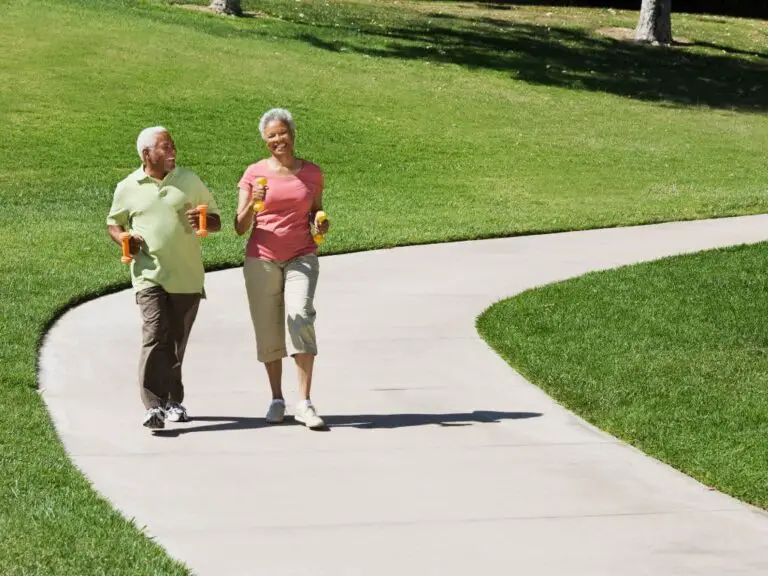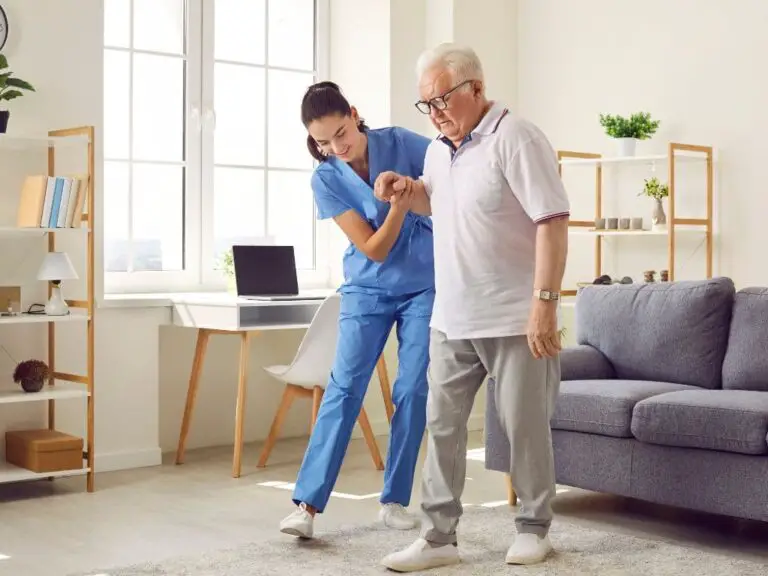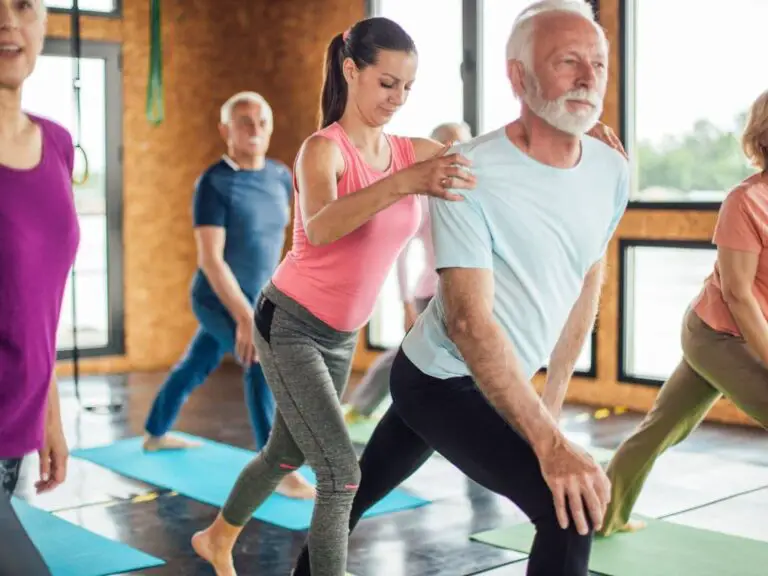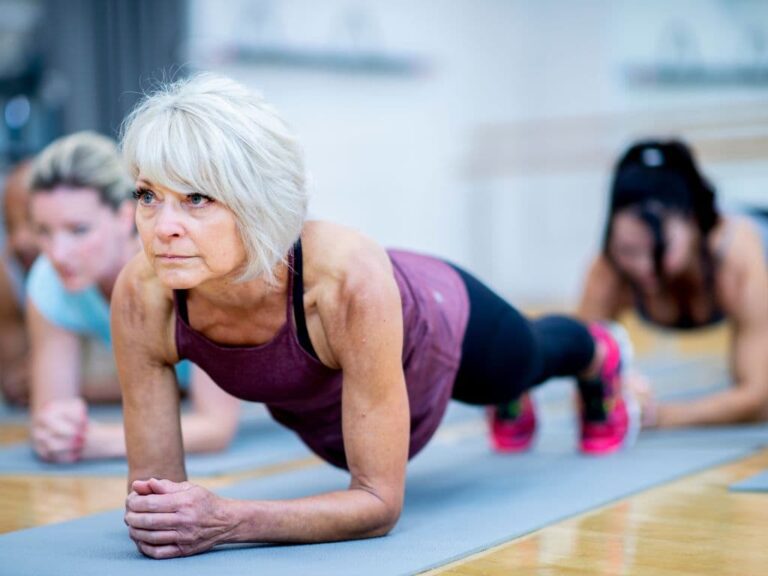Regaining Leg Strength in Seniors: Exercises and Tips
As we age, it’s common for our muscles to weaken and lose strength. This can be especially noticeable in the legs, which we rely on for balance, stability and mobility in our daily lives. For seniors, maintaining leg strength should be a top priority. Weak leg muscles can increase the risk of falls and injuries, decrease independence, and negatively impact overall health and quality of life.
The good news is that there are many effective ways for seniors to regain strength in their legs, even if they have lost muscle mass over time.
To regain strength in your legs, engage in regular exercise such as chair squats, leg presses, walking or marching in place, and resistance band exercises. Consult with a physical therapist for personalized routines. Maintain a balanced diet rich in protein and ensure adequate rest and recovery. Regular health check-ups can also help monitor progress and address underlying issues affecting muscle health.
With a combination of regular exercise, proper nutrition, rest and recovery, seniors of all fitness levels can improve lower body strength and enjoy the many benefits this provides.
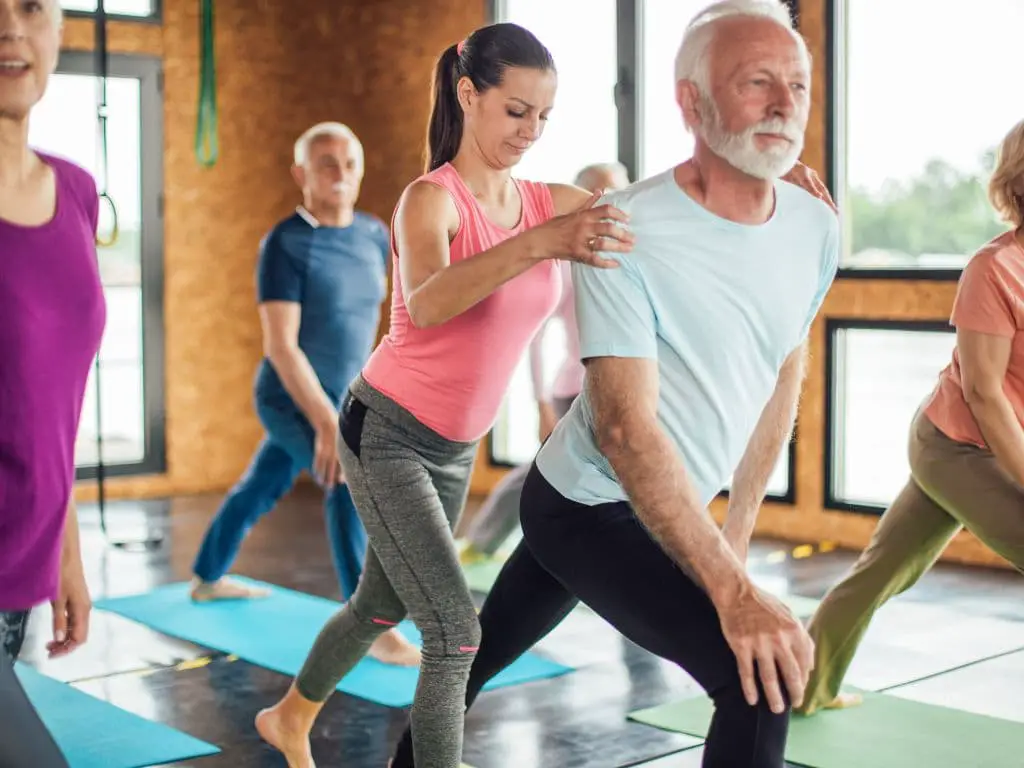
Why Is Leg Strength Important for Seniors?
Having strong legs provides essential stability and balance for the activities of daily living. From walking the dog to climbing stairs, carrying groceries, or playing with grandchildren, we constantly rely on our leg muscles. Losing leg strength makes all of these daily activities much more difficult and hazardous. Leg weakness is a major contributor to loss of mobility in seniors, which can lead to dependence on others for help. Weak legs also increase the likelihood of experiencing dangerous and debilitating falls.
Additionally, losing lean muscle mass is a natural part of the aging process. Without strength training, seniors can lose up to 3 to 5 percent of muscle mass per decade after age 50. Maintaining and building leg strength can help counteract this age-related decline in muscle mass, keeping legs looking and functioning at their best. Having stronger legs also reduces joint pain and pressure, as the muscles help absorb shock and impact that would otherwise directly affect joints.
Overall, keeping the legs as strong as possible is incredibly important for maintaining independence, improving balance, assisting with mobility, preventing injury from falls, and supporting daily function into old age. Making leg strength a priority can help keep seniors living vibrant, active lifestyles for years to come.
What Causes Loss of Leg Strength in Seniors?
A number of factors contribute to the gradual loss of leg strength that comes with aging:
- Muscle mass loss – As we get older, muscles naturally atrophy and lose mass, especially without regular strength training. The legs have some of the largest muscles in the body, so they are significantly impacted.
- Neurological changes – The nerves that trigger muscle contractions can deteriorate, resulting in reduced activation of leg muscles. Reflexes and signals from the brain to the legs diminish.
- Hormonal changes – Decreasing hormone levels like testosterone, estrogen, growth hormone and insulin growth factor contribute to muscle loss over time.
- Inactivity – Older adults are generally less active than when they were younger. Prolonged periods of inactivity, bedrest or hospitalization can rapidly accelerate leg weakness.
- Chronic health conditions – Arthritis, peripheral artery disease, obesity and diabetes are examples of conditions that can impair strength.
- Poor nutrition – Inadequate intake of protein, calories and micronutrients make muscle maintenance difficult.
- Medications – Some drugs like steroids and those that affect the central nervous system can cause muscle weakness or atrophy.
While some degree of leg strength reduction is normal with aging, seniors can take action through exercise, nutrition and lifestyle to minimize losses and rebuild leg muscles. Consulting with a doctor to address any underlying conditions is also recommended.
How Can Seniors Regain Strength in Their Legs?
The key is to adopt healthy lifestyle habits that stimulate, strengthen and preserve the muscles in the legs. Seniors should focus on the following:
1. Regular Exercise
Without a doubt, exercise is the most important activity for regaining and maintaining leg strength. Older muscles need to be challenged regularly through activities like resistance training, weight lifting, and moderate-intensity aerobic activity. Exercise stimulates protein synthesis in muscles, increases lean muscle mass, and improves neurological signaling to muscles. It also enhances balance and stability, which help strengthen the many small stabilizer muscles in the legs.
2. Physical Therapy
Working with a trained physical therapist can help seniors safely and effectively improve leg strength through personalized exercise routines. Therapists create programs tailored to each patient’s abilities and limitations. They also utilize techniques like massage, flexibility exercises and assisted devices to facilitate muscle retraining.
3. Balanced Diet
Nutrition provides the building blocks for renewing muscle tissue. Getting sufficient protein, healthy fats, complex carbs, vitamins and minerals can help optimize muscle growth and functioning. Protein intake is particularly important – seniors should aim for 0.5 – 1 gram per kg of bodyweight per day. Consuming protein shortly after workouts helps muscles repair and strengthen.
4. Adequate Rest and Recovery
Muscles do not grow stronger during exercise – they actually grow and strengthen when resting. Allowing for proper rest and recovery time helps leg muscles rebuild, regenerate and get bigger and stronger. Seniors should avoid exercising the same muscles on consecutive days. Sleep is also essential – aim for 7-9 hours per night.
5. Regular Check-ups and Health Monitoring
Annual check-ups and appropriate management of any underlying health conditions that can impact muscle health helps seniors reach their leg strengthening goals. Doctors can check for issues like nutrient deficiencies, hormonal imbalances, and neurological dysfunction that may be addressed. Lab work can assess kidney and liver function important for metabolism and protein utilization.
With determination and consistency, seniors at any fitness level can rebuild leg strength, maintain independence, and enjoy an active lifestyle using these strategies.
What Are Some Effective Leg Strengthening Exercises for Seniors?
Incorporating a variety of leg strengthening moves 2-3 times per week is recommended for regaining leg power. Always consult a medical professional before starting a new exercise routine. Effective leg exercises for seniors include:
1. Chair Squats
This beginner exercise tones quadriceps, glutes and hamstrings. Start by standing with feet hip-width apart, holding chair back for support. Slowly lower down as if sitting, then press through heels to return to start. Do 2-3 sets of 10-15 reps.
2. Leg Presses
This move strengthens quads, hamstrings and glutes. Lie on your back and place feet on a leg press machine or sit against a wall with legs bent. Straighten legs with controlled force. Complete 8-10 reps of 2-3 sets.
3. Ankle Weights
Strap ankle weights around the lower shins and complete standing leg lifts, raises, extensions and circles. Try 2 sets of 12 reps per leg. Ankle weights build calf, quad and hamstring strength.
4. Walking or Marching in Place
Walk with good posture and engaged core muscles. For low impact, march briskly lifting knees as high as possible. Shoot for 30 minutes daily or break it up into multiple short sessions. This improves leg endurance.
5. Step-Ups
Step forwards and upwards onto a box or stair with one foot, lifting your body up. Step back down and repeat leading with the other leg. Complete 3 sets of 5 step-ups per leg for balance and quad strength. Use a railing for support if needed.
6. Calf Raises
Stand with feet shoulder-width apart. Raise up on tip toes, flexing calves. Hold briefly, then lower down. Repeat for 2-3 sets of 10-15 reps for well-defined calves. Hold weights for added challenge.
7. Resistance Band Exercises
Sit in a chair and loop bands around feet. Open and close legs, press feet forward and do leg extensions. Bands add resistance to strengthen various leg muscles.
8. Yoga and Pilates
Modified yoga and Pilates moves like lunges, leg lifts, and squats done either standing or seated boost lower body strength. Always listen to your body’s limitations.
9. Swimming or Water Aerobics
The water provides great resistance to build leg strength without high impact. Water offers natural support while you move legs in different ways.
10. Tai Chi
Slow, focused weight shifting while doing this gentle martial art improves leg strength required for balance and stability.
Choose moves appropriate for your current fitness level and modify as needed. Consistency is key for the best leg strengthening results.
What Precautions Should Be Taken When Exercising?
It’s important for seniors to take some precautions when doing leg strengthening exercises:
- Consult a doctor before starting a new exercise program, especially with any underlying health conditions.
- Warm up with light cardio and stretches to prepare muscles and prevent injury.
- Use light weights and do low reps to start if new to strength training.
- Focus on proper form and move through full ranges of motion. Avoid locking knees.
- Increase weight and intensity gradually over time.
- Listen to your body and don’t push through pain.
- Stay hydrated and don’t exercise if feeling unwell.
- Use chairs, railing, or a spotter for needed support and balance.
- Wear proper footwear for weight-bearing activities to prevent slips.
- Cool down and stretch after workouts.
- Allow for adequate rest days between leg exercises.
Following precautions and using proper technique will help seniors safely progress at their own pace.
How Can Caregivers Help Seniors Regain Leg Strength?
For seniors limited by illness, injury or restricted mobility, assistance from a caregiver can make a tremendous difference in regaining leg strength. Caregivers can:
- Help transport seniors to and from strength training sessions or rehab appointments
- Demonstrate proper form and provide verbal cues during exercises
- Spot seniors using machines or doing bodyweight moves to improve safety
- Provide steady support for balance during standing leg exercises
- Research and implement at-home leg strengthening routines
- Prepare and deliver healthy, protein-packed meals to support muscle growth
- Ensure seniors avoid overexertion and take enough rest days
- Provide daily encouragement and motivation to remain consistent
Even simple actions like these allow caregivers to actively participate in seniors’ strengthening programs for the best results.
What Are the Benefits of Regaining Leg Strength for Seniors?
Rebuilding leg muscle and strength delivers numerous valuable benefits:
- Improved mobility and balance – Stronger legs enhance stability, gait, and coordination.
- Greater independence – Leg strength allows seniors to more easily care for themselves and stay in their own homes.
- Reduced risk of falls or injury – Powerful legs improve stability and help prevent dangerous tumbles.
- Increased bone density – Weight-bearing exercise promotes bone strength to ward off osteoporosis.
- Better joint health – Strong leg muscles help support joints and reduce pain.
- Enhanced cardiovascular function – Stronger legs improve circulation and heart health.
- Higher quality of life – Being able to move with confidence improves physical capability and emotional wellbeing.
- Longevity – Keeping the body and mind active contributes to a longer, vibrant life.
Committed leg strengthening brings transformational benefits at any age. Seniors who put in the work will reap the rewards of greater mobility, vitality and resilience for years to come.
Frequently Asked Questions
-
How can I regain strength in my legs?
To regain strength in your legs, engage in regular exercise such as chair squats, leg presses, walking or marching in place, step-ups, and resistance band exercises. Consult with a physical therapist for personalized routines. Maintain a balanced diet rich in protein to support muscle growth. Ensure adequate rest and recovery time between workouts and get regular health check-ups to manage any underlying conditions that may affect muscle health.
-
What exercises should elderly people do?
Examples of aerobic exercise include jogging or running, dancing, swimming and biking. Your muscles will be stronger by strengthening exercises. Strength can be built by lifting weights and using resistance bands.
-
Can a 75 year old still build muscle?
You can still bulk up your muscle by pressing iron for seniors Researchers found that lifting weights can help people over 50 not only preserve but even increase muscle mass.
-
What age is a female senior citizen?
This entry was posted in Assisted Living. The United States considers a senior citizen anyone who is over the age of 62 years old.
-
How can I gain strength after 70?
Strength training is a great option. It helps you keep your muscles strong and prevents muscle loss. Two days per week is a good goal. You can lift weights or use resistance bands. Also, you could do bodyweight exercises such as pushups and situps. To avoid injuries, a personal trainer will show you how to properly form.
-
What is a good heart rate for 70 year old?
70-year olds: 75-78% beats per hour.
-
What causes muscle loss in legs?
Scientists discovered that people who lose muscle mass due to ageing do not simply stop using muscle power in everyday life. Muscular atrophy refers to the shrinkage and loss of muscle tissue. Losing nerve supply to muscles can cause muscle atrophy, which causes them to simply die.
-
How many times a week should seniors do strength training?
Researchers recommend that you train at most three times per week, but no more than six. Allow for two minutes between resistance-training machines. It seems that training the lower back muscles only once per week is just as efficient as exercising it more frequently.
-
Can an 80 year old get stronger?
Dr. Bean says that although working out isn’t going turn an 80-year-old, 90-year old or 100 year-old into someone 40 years or older, most people can improve their strength and endurance.
-
How much exercise does a senior need?
What amount of activity should older adults do? The Physical Activity Guidelines For Americans (PDF, 14.5M), recommends that older adults should engage in at least 150 minutes of aerobic activity per week. This could include walking fast or dancing.


